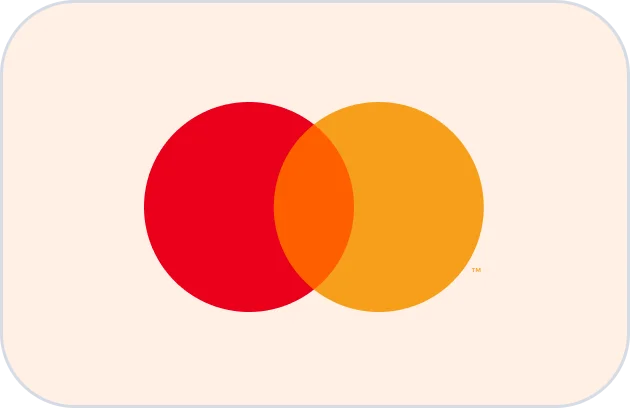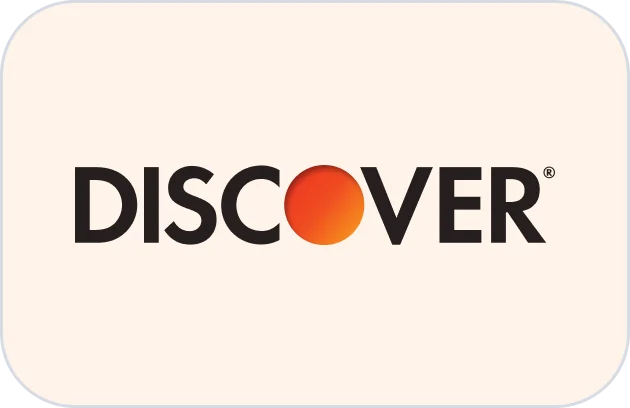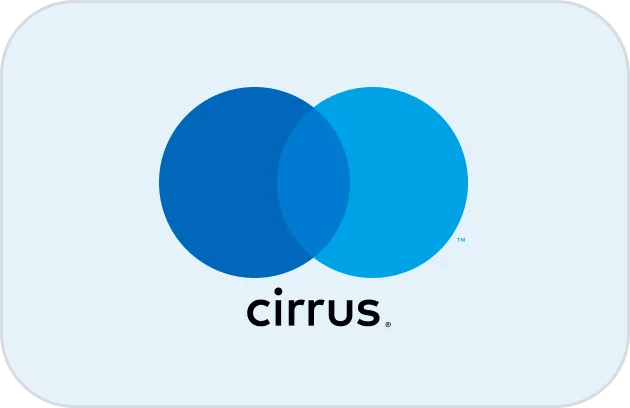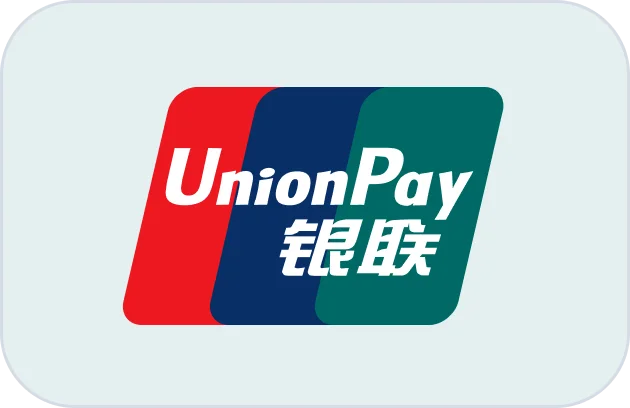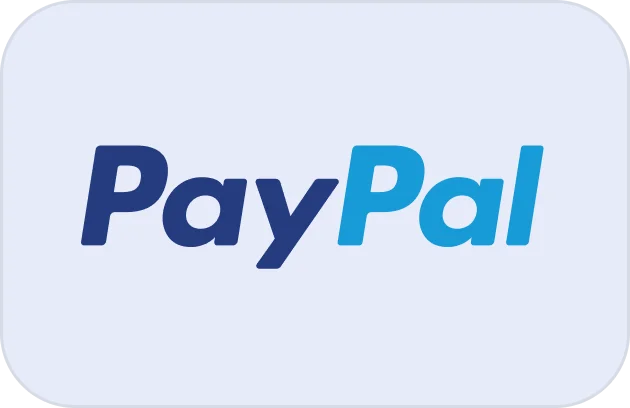If your dialer still runs on gut feel, you’re burning hours between connects—time that should be turning into qualified conversations. Predictive dialing isn’t just about calling faster; it’s about sequencing the next best attempt so agents speak to the right person, at the right moment, with the right context. Below is a field manual: 50 proven strategies (table first), the data plumbing that makes them work, orchestration patterns that survive real-world constraints, coaching that compounds win rates, and a 120-day rollout plan that moves numbers you can show to finance. Along the way, you’ll see natural hooks into your routing layer, real-time coaching, QA, and reliability stack—so the whole machine compounds instead of fighting itself.
1) The 50 Predictive Strategies — Field-Tested
| Strategy | Core Focus | Execution Tip | Metric Impact |
|---|---|---|---|
| 1) Time-of-Day Propensity | Connect Rate | Score by prior answer windows; shift first passes into 2 highest windows. | +8–15% connects |
| 2) Day-of-Week Lift | Connect Rate | Prioritize “Fri PM” for B2C, “Tue–Thu AM” for B2B; throttle low-yield days. | +4–9% connects |
| 3) Fresh-Lead First-Strike | Speed-to-Lead | Guarantee first call <60s of form submit; second attempt <10 min if missed. | +20–40% contact |
| 4) Multi-Channel Wake-Up | Reachability | Send SMS/email preview before high-value call window; include callback link. | +10–18% connects |
| 5) Local Presence Numbers | Answer Likelihood | Maintain verified CNAM; rotate clean local DIDs per region to avoid spam flags. | +12–25% connects |
| 6) Call Cadence Ladders | Attempt Strategy | 3-7-14 day spacing after first 48h burst; stop on negative signal. | −15% wasted dials |
| 7) Answering Machine Detection (AMD) Rules | Waste Reduction | Tune AMD sensitivity by carrier; leave branded VMs with CTA in business hours. | +6–12% agent talk-time |
| 8) Voicemail Variant Testing | Callback Rate | Test 3 scripts (value, curiosity, deadline); rotate weekly on low-connect segments. | +2–5% callbacks |
| 9) First-Agent Stickiness | Continuity | Keep same rep on call-back attempts for 48h to exploit familiarity effect. | +5–10% close rate |
| 10) Entitlement-Aware Priorities | Value Routing | VIP/at-risk flags escalate in predictive queue; reserve best windows. | −20% churn risk |
| 11) Lead Source Cohorts | Quality Mix | Weight paid search/social/referrals differently; trim low-yield sources fast. | +8–12% opp rate |
| 12) Compliance-Guarded Throttle | Regulatory | Block auto-dialing DNC/consent-missing; enforce federal/state quiet hours. | Risk ↓, cost ↓ |
| 13) Carrier Reputation Watch | Deliverability | Monitor spam tagging; rotate healthy DIDs; register branded caller ID. | Connect stability ↑ |
| 14) Geo/Timezone Targeting | Reachability | Predictive blocks hit local prime times; avoid cross-timezone penalties. | +7–11% connects |
| 15) Micro-Seg Cadence (Title-based) | Persona Fit | Executives = fewer, higher-signal attempts; managers = more frequent. | Reply rate ↑ |
| 16) Recency-Score Boost | Intent Heat | Decay score by hours since last site activity/asset open. | +5–9% connects |
| 17) Cross-Channel Signal Merge | Context | If chat/email intent exists, call with that context in the opener. | AHT −8–12% |
| 18) Appointment Reminder Dials | No-Show Cut | Predict 24h/2h reminders for scheduled demos; escalate if no confirm. | No-shows −18–30% |
| 19) Transfer-Ready Hunt Groups | Throughput | Predict agent free time; pre-ring next call to minimize idle. | Talk-time +6–10% |
| 20) Disposition-Driven Next Best | Sequencing | “Busy” → retry in 15–30 min; “No answer” → shift time window next day. | Attempts ↓, hits ↑ |
| 21) Compliance Clock Guardrails | Lawful Timing | Hard stops at state quiet hours; weekend rules by vertical. | Fines avoided |
| 22) Multiple DID A/B | Answer Rate | Test 2–3 clean caller IDs per cohort; demote underperformers weekly. | +3–6% connects |
| 23) SIP Trunk Diversity | Reliability | Fail fast to alternate trunk on jitter/packet loss thresholds. | Downtime ↓ |
| 24) Role-Fit Scripting | Conversion | Predict opener variants by persona; surface 3 evidence points. | Win rate +5–9% |
| 25) Objection Heatmap Brevity | Momentum | Short-form responses for top 5 objections; pivot to next step. | AHT −5–8% |
| 26) Multi-Attempt Windowing | Cadence | Burst attempts in best window; back off progressively. | Connects ↑ sustainably |
| 27) Account-Based Sequencing | B2B Reach | Cycle contacts in an account by influence order; avoid duplicate dials. | Meetings ↑ |
| 28) “Hot Hand” Agent Bias | Throughput | Temporarily favor agents with high same-day connects. | Talk-time +3–5% |
| 29) Call-Back Window Offers | Customer Control | Offer 3 windows via SMS/email after missed attempt; queue with priority. | Reach rate +7–12% |
| 30) Language/Region Match | Experience | Auto-detect locale; route to language-matched reps by default. | CSAT ↑, repeats ↓ |
| 31) Funnel-Stage Priority | Revenue | Pre-demo > nurture > cold; tie to quarter close cadence. | Pipeline lift |
| 32) “Never Again” List | Brand Safety | Hard-suppress negative-experience contacts across campaigns. | Complaints ↓ |
| 33) Micro-Time Boxing | Agent Rhythm | 15-minute sprints per cohort; reduce context switching. | Focus ↑, idle ↓ |
| 34) Knowledge-Trigger Prompts | Quality | Auto-surface micro-scripts & references from prior outcomes. | FCR ↑ |
| 35) Pre-Call Research Gate | Relevance | Enforce 15-second glance: firmographics, last activity, next best ask. | Meeting rate ↑ |
| 36) Repeat Contact Suppression | Irritation Avoidance | Do not dial within X hours after answered refusal. | Trust ↑ |
| 37) Positive Signal Spike | Intent | Prioritize accounts with recent pricing/docs views. | Opps +6–10% |
| 38) “Quiet Hours” Content Swap | Nurture | Send asset instead of calling; schedule consented call for next window. | Risk ↓ |
| 39) Transfer-Proof Handoffs | Continuity | Preserve context & promises when passing to AE/SE. | Drop-off −10–15% |
| 40) Negative-Signal Backoff | Efficiency | Throttle after spam report/blocked signals. | Wasted dials −12% |
| 41) Net-New vs. Recycle Mix | Yield | Hold target ratio (e.g., 70/30) based on weekly results. | Throughput ↑ |
| 42) Offer-Triggered Windows | Urgency | Dial near offer expiries; script the deadline credibly. | Conversion ↑ |
| 43) “Two-Person” Reach Plan | Coverage | Alternate two reps for hard-to-reach accounts to vary voice/style. | Connects +3–6% |
| 44) Signal-Triggered Redials | Timing | Instantly attempt after site return or asset open. | Hot connects ↑ |
| 45) Channel Switch on Stall | Breakthrough | If 3 calls fail, send concise SMS with value and window link. | +2–4% callbacks |
| 46) Industry-Specific Windows | Context | Dial around shift changes, fiscal cycles, or clinic hours as applicable. | Connects ↑ |
| 47) Exit-Criteria Discipline | Focus | Stop after defined attempts without signal; move to nurture. | Wasted effort ↓ |
| 48) “First 60 Seconds” Hooks | Engagement | Coach 2 tight hooks; predict which to use by persona history. | Drop-off −6–10% |
| 49) Calendar-Aware Predictions | Availability | Avoid holidays/conferences per region; push to the day after. | Connect variance ↓ |
| 50) “One Ask” Discipline | Clarity | Predict best CTA (demo, quote, verify) for that persona and stage. | Next-step rate ↑ |
2) Data Foundations: Signals Your Model Needs Now
Predictive dialing wins or loses in the data layer. Every “what next?” decision should read from a clean event stream: Attempted, Dispositioned, Answered, Transferred, Booked, and Outcome. Tie those to contact attributes (role, timezone, language), consent status, and recent digital signals (site return, asset opens, pricing views). You’ll also want product-specific triggers—renewal dates, trial milestones, usage anomalies—to tell the model where urgency is real. If your contact infrastructure is already setting the stage for omnichannel outcomes and protecting revenue paths, you can piggyback the dialer’s event model into that same backbone to prevent customer loss with proactive saves.
Two guardrails keep the data useful: immutability (don’t rewrite events; append new truths) and stable IDs (conversation, contact, account). That lets you rebuild a trustworthy timeline and reliably join dialer outcomes to pipeline and revenue. For performance, materialize intraday aggregates (connects by window, callback keeps, agent talk-time) while persisting raw events to your warehouse for cohort analysis later.
3) Orchestration Patterns: When Models Meet Real-World Constraints
Predictive engines live in the tension between speed and control. You want the model to aggressively place the next best call—yet never overwhelm agents, blow through compliance windows, or trip carrier spam filters. Borrow the “breathing queues” idea from modern routing: let the dialer expand when talk-time falls and contract when occupancy risks burnout. Put callbacks in short windows (e.g., 1:00–1:15 PM) and jump them to the front at window start. When reliability matters (it always does), anchor your dialer on transport that’s designed for low jitter and fast failover so calls don’t die in the air; this is the same principle used to eliminate downtime in support queues.
Three patterns reduce chaos:
- Stickiness with time-boxed fallbacks: keep the conversation with the same SDR for N minutes to exploit rapport; if breached, route to a pooled team with preserved context.
- Windowed callbacks: customer-chosen windows minimize phone-tag; the dialer should pre-ring an agent 20–30 seconds before a window starts.
- Consent-aware pacing: throttle by consent class and state law. Tie the dialer’s clock to your consent ledger so no model can overshoot guardrails.
4) Coaching in the Loop: Make Agents Faster Than the Model
A predictive dialer can hand you the right person at the right moment—and still lose—if the opener flops or objections meander. Real-time guidance keeps human skill compounding. Use UI-level prompts to nudge the first 60 seconds, with short hooks that match persona and prior signals. Micro-scripts for the five objections you hear every week keep momentum high. This is the same capability stack that powers real-time coaching on service lines; sales should get it, too. And don’t leave quality to random sampling—AI can pre-score every conversation and point supervisors at the five calls that would change behavior fastest, as in AI-first QA.
5) Compliance & Trust: Predictive Without Penalties
Predictive dialing must be ruthlessly legal. Consent classification (express written, prior relationship, transactional), state/federal quiet hours, and DNC suppression must gate every decision. Your model should never outrank policy. Bake policies into defaults and test them in staging with real numbers before you scale. For outbound teams selling into the U.S., build on the same playbook as modern TCPA-safe outreach—that means per-state timing rules, consent proofs tied to the contact, and revocation flows that actually work.
Trust also includes perceived respect. A good dialer will stop after negative signals, switch to content during quiet hours, and use short voicemails that explain value and offer control (“pick a time here”). When customers can choose windows and keep promises, complaints drop and your caller ID reputation stays clean—your connect rate rises because you’re predictable and polite.
6) Reliability & Data Flow: The Machine That Doesn’t Stall
All the clever modeling fails if your trunks wobble or your event stream misfires. Architect the dialer like your most critical line: redundant edges, diverse carriers, and sub-second failover on threshold breaches. Keep your analytics bus simple—append-only events mirrored to the warehouse with stable IDs—so leaders can reconcile dialer performance to pipeline. The same engineering patterns that take you from cloud lag to zero downtime should run under your dialer: health checks, circuit breakers, and graceful degradation (throttle, don’t stop). For revenue planning, tie dialer outcomes to your opportunity model and the KPIs used in your benchmarks so you can negotiate coverage and quotas on evidence, not folklore.
On the routing side, predictive dialing shines when it works with, not against, your intent engine. If your contact platform already prioritizes conversations by value, entitlement, and backlog, use those same signals to decide which prospects deserve your best windows (and which can wait). It’s the same logic that underpins predictive routing: you’re not just dialing faster—you’re dialing smarter.
7) 120-Day Rollout & KPIs That Prove It Worked
Days 1–14 — Foundations. Classify consent. Stand up the event model and warehouse mirror. Register branded caller ID, clean DIDs, and local presence per region. Define SLOs: speed-to-lead <60s, callback kept ≥95%, connect rate targets per segment. Publish a first pass of the 50 strategies—your baseline defaults.
Days 15–45 — Throughput & Quality. Launch predictive sequencing for fresh leads, callbacks, and high-value cohorts. Turn on real-time coaching prompts for openers and top objections. Start weekly reviews: connects by window, talk-time, appointment rate, complaint rate. Hard-suppress negative signals and enforce exit criteria. Publish a “bottom 10%” retirement list every week and a “top 10%” promotion list.
Days 46–90 — Cohorts & Experiments. Split performance by lead source, persona, and region; aim for a 70/30 mix of net-new vs. recycle. Test multi-channel wake-ups and windowed callbacks. Add persona-fit openers and disposition-driven next attempts. Wire in QA pre-scoring so supervisors coach the five calls that matter instead of random clips—lean on the same approach you use in AI-audited QA.
Days 91–120 — Business Proof. Connect dialer events to pipeline: meeting rate, opportunity creation, stage velocity, and closed-won. Publish a single exec page with: revenue/contact, cost/contact, no-show rate, connect rate, speed-to-lead SLO adherence, carrier reputation health, complaint rate. Lock a quarterly experiment slate (five tests max). Route maintenance to ops; protect a sandbox lane for 2–3 new strategies each month.
By day 120, leaders should feel the cadence take over: fewer “are the numbers right?” debates, more “what do we change next?” decisions. If talk-time is up, connects are consistent, and complaint rates are flat or falling, the dialer is compounding—not just spinning.
Related reading to round out the stack: a modern call center software core, dialer design that prioritizes revenue, and platform patterns that eliminate lag. Keep predictive aligned with routing intelligence via predictive routing, and protect trust with TCPA-first compliance.
FAQs — Short Answers That Change Outcomes
1) What’s the fastest way to raise connect rate this quarter?
Do three things: (1) enforce speed-to-lead <60 seconds for fresh forms, (2) implement local presence with clean CNAM and DID rotation, and (3) run time-of-day/day-of-week propensity so first passes land in the two best windows. Teams that do all three see double-digit lifts without increasing headcount.
2) How do we avoid carrier spam flags while dialing at scale?
Keep attempts reasonable per DID, rotate healthy numbers, register branded caller ID, and back off immediately on negative signals (blocks, complaints). Segment cadence by consent class and state law. When in doubt, switch to content (email/SMS) and let prospects pick a window—clean reputation beats brute force.
3) What’s the right number of attempts per lead?
It depends on consent and persona, but a common pattern is a 48-hour burst (2–3 attempts across two windows) followed by a 3-7-14 day ladder. Always stop on negative signals. Recycle only on positive signal (site return, asset open) and let the model choose the next best time.
4) Where should predictive logic live—CRM, dialer, or routing layer?
The decisioning should sit close to the conversation platform so it can read consent, value, backlog, and callbacks in real time. Use the CRM as the system of record for outcomes and pipeline, but keep the “what next?” brain near routing so it can breathe with live conditions.
5) How does predictive dialing change staffing?
Expect higher occupancy and more bursts around high-propensity windows. Staff to interval forecasts, not daily averages. Protect short admin blocks for follow-ups and notes or you’ll drown agents in back-office work after connecting more calls.
6) Do real-time coaching and predictive dialing conflict?
They compound. Predictive gets you into more right-time conversations; coaching makes those moments count. Keep prompts short and persona-specific; supervisors should review the five most coachable calls daily, not random clips.
7) What KPIs prove the dialer is actually working?
Intraday: speed-to-lead adherence, connect rate by window, talk-time, callback kept. Cohort: appointment rate, no-show rate, objection rate by persona. Business: opportunity creation, stage velocity, revenue/contact, complaint rate, and carrier reputation health. If connects rise while complaints stay flat, you’re scaling responsibly.
8) How do we keep experiments from derailing the floor?
Create a “sandbox” lane (5–10% volume) where new strategies live for one week. Promote winners, retire losers. Never change more than five things per month. Publish a weekly one-pager with the changes and the numbers—make experimentation a habit, not chaos.
Bottom line: Predictive dialing is a system, not a switch. Wire clean events, respect consent, protect reliability, and coach in the moment. Do those things and the 50 strategies above will convert dead time into pipeline—consistently, audibly, and on a timeline that finance will love.



